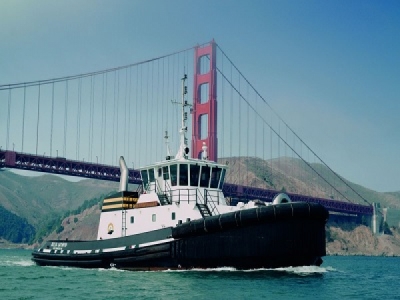
Posted on December 11, 2018
Hybrid and emission reducing solutions for four-stroke engines were out in force at the International Workboat Show in New Orleans last month.
Technology group Wärtsilä arguably stole the show with the introduction of its first ever high-speed engine. Developed in collaboration with Liebherr, the Wärtsilä 14 is a high-speed, compact engine designed to fit requirements for limited space and weight, lower capital expense and to meet current and future global emissions targets.
“We are very proud of this small but mighty high-speed engine,” said Stefan Wiik, vice president, marine power solutions, Wärtsilä, “because it heralds entry into a new, strategically important market for our brand, it reinforces our global position as leader of fully integrated technologies and hybrid solutions and bears testimony to the tangible benefits of our close cooperation with Liebherr”.
Using Wärtsilä’s Smart Marine concept the new engine serves as both main propulsion and auxiliary genset and is suitable for hybrid installations. It is available in 12 and 16-cylinder configurations, delivering a power output of 755-1340 KW in mechanical propulsion, and 675-1155 KWe in auxiliary and diesel-electric configurations.
Wärtsilä also introduced the HYTug 40 design and concept, a smaller version of the HYTug launched in 2017. The tug is designed for shallow draft operation and features two Wärtsilä 14 engines along with a hybrid propulsion solution with various operating settings, including a zero-emissions mode. When fitted with a Wärtsilä NOx reduction system she meets IMO Tier III requirements.
First deliveries of the Wärtsilä 14 are planned for late 2019.
HYBRID SYSTEMS
Meanwhile, Rolls-Royce capitalised on the burgeoning demand for hybrid powered workboats with the announcement that it had received approval in principle (AIP) from classification organisation ABS for its new hybrid propulsion system for tractor tugs.
Said to be the world’s first hybrid tractor tug, the vessel for which the system was developed was designed by Jensen Maritime and built by Nichols Brothers Boat Builders for Baydelta Maritime. The Rolls-Royce hybrid propulsion system consists of power take-in, electric motors, and main propulsion engines connected to Rolls-Royce azimuth thrusters, allowing the vessel to operate in either a diesel-mechanical, diesel-electric or boost mode configuration.
Griff Lane, Rolls-Royce’s senior vice president, commercial marine, Americas, said: “Our long-standing partnership with Baydelta Maritime and close cooperation with Jensen Maritime, Nichols Brothers and ABS has paved the way for an innovative, environmentally-friendly hybrid tug capable of safe and reliable operation and maximum bollard pull.”
“The key benefit of a hybrid configuration is that it reduces the power requirement,” continued Lane. “Typically, a tug the size of the Baydelta vessel would need a power output 2500kW. The hybrid arrangement allows operators to achieve the required bollard pull from a smaller engine.”
The hybrid arrangement provides power to US255 azimuth thrusters with ducted fixed pitch propellers that can be rotated 360 degrees around the vertical axis. The vessel will be delivered in February 2019.
For Caterpillar Marine, the show was an opportunity to present its latest advances in emissions -cutting technology. The company is has completed its portfolio of US EPA Tier 4 Final and IMO Tier III solutions, deploying selective catalytic reduction (SCR) technology across the range.
“This solution enables Caterpillar to deliver on critical requirements such as the proven reliability and durability of our engine, fully integrated solutions and lowest total cost of ownership, all while ensuring regulatory compliance,” said Jason Spear, business development manager for Caterpillar Marine.
Source: MotorShip





